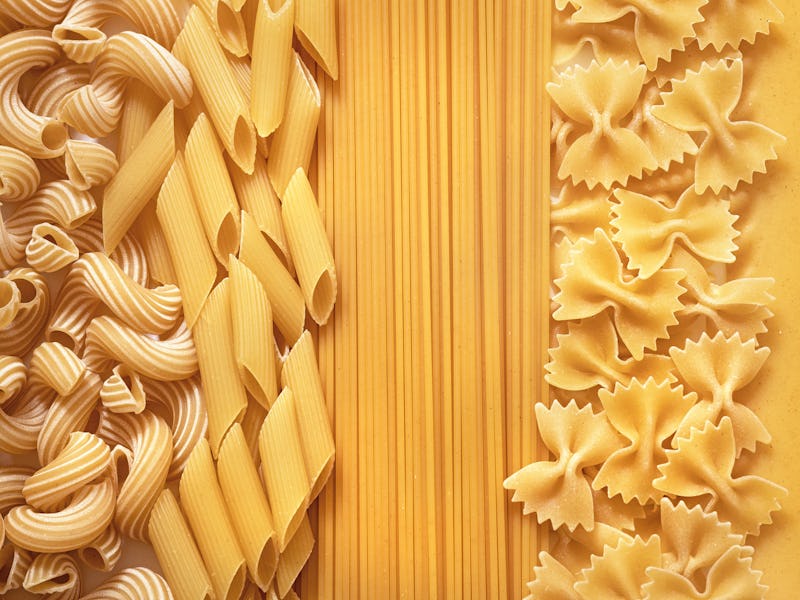Beauty comes in all shapes and sizes. We know this because of the sheer variety of pasta.
Corkscrews and wagon wheels, bow ties and tubes — all delicious, but all disappointingly packaged. You believe you bought a box of macaroni but actually you bought a box half full of macaroni and half full of noodles’ negative space and air. There must be a better way — and scientists think they have found it in the form of one of the most infuriating/useful inventions: flatpack furniture.
INVERSE is counting down the 20 science discoveries that made us say “WTF” in 2021. This is #3. See the full list here.
The discovery — In May, an innovative team of material scientists published research in the journal Science Advances which describes a way to flatpack pasta in such a way as to reduce packaging waste without sacrificing the shape of curved, airy noodles like rigatoni or macaroni.
“Based on our geometrical calculation, flatly [packed] macaroni pasta could save more than 60 percent of the packaging space,” Lining Yao, a study co-author, told Inverse at the time. Yao is also the director of Carnegie Mellon University’s Morphing Matter Lab. She and her team have taken on the challenge of designing space-efficient pasta before.
“Because more than half of the food packaging space, in this case, is used to pack air,” she explains.
How they did it — In the new study, Yao and her team outline an improvement on their past attempts at flat packing pasta — by using some strategically placed grooves. Older iterations of their invention had shown that stamping grooves on flat, dried pasta could help the food inflate when it was placed in water, but they couldn’t explain why this was the case.
Just add water.
In the new work, the team use both simulations and physical experiments to test the best way to pack and stamp both pasta and hydrogel. The models helped them to predict and then master the creation of different pasta shapes using cleverly-positioned grooves and folds — so when a flat noodle touched the water, it could spring into a shell, for example.
The team simulated a number of shapes like helixes, saddles, twists, and boxes. First, they tested a computer simulation to confirm that certain grooves would create specific pasta shapes. Then, they took it to the kitchen. Both pasta and hydrogel behaved just as the simulations predicted.
Why it matters — This morphing pasta could revolutionize how we package noodles from cavatappi to Kraft mac n’ cheese. The result is delicious for us and great for the planet: less waste, more pasta. Flour-based pasta achieves its final 3D shape within seven to 12 minutes of hitting boiling water and then stays in its new form, the paper says.
The implications also go beyond pasta.
“We anticipate this can be adapted to a variety of food that can swell in water, including food gels — like gelatin dessert, or Japanese wagashi — and other flour-based noodles,” Yao says.
INVERSE is counting down the 20 science discoveries that made us say “WTF” in 2021. This is #3. Read the original story here.
